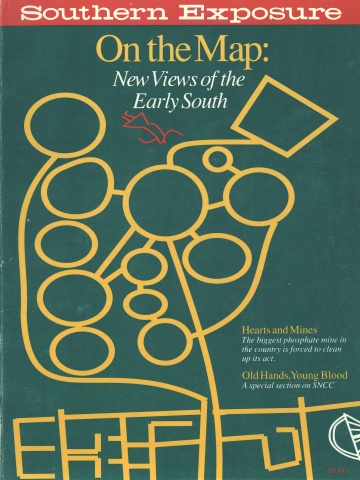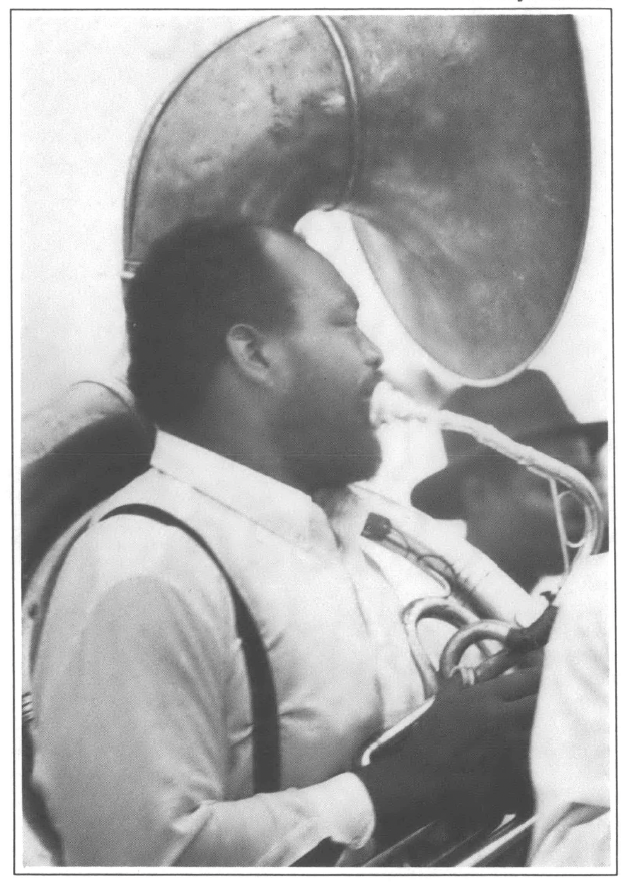
This article originally appeared in Southern Exposure Vol. 16 No. 2, "On the Map: New Views of the Early South." Find more from that issue here.
New Orleans, La. — If the late poet Carl Sandburg had listened a bit more carefully when he heard America singing, he would have realized that what America was often singing during the 1950s and ’60s was being sung by someone from New Orleans.
From the time the rich baritone smooth jump shouter blues spouter Roy Brown hit number one on the old Billboard R&B charts in 1950 with his version of “Stack O Lee,” this city has produced thousands of hits now considered classics by music historians.
Most of the recording was done in the French Quarter at the small, one-mike studio of Cosimo Matassa. Matassa only got into recording as a hobby because his dad ran an appliance and radio store. Yet out of that primitive studio came the New Orleans sound — one that captivated the nation and brought major labels and independents flocking to the city.
“We didn’t really know what we were doing,” Matassa is fond of saying. “We were having fun. We didn’t think of it as history.”
A few artists managed to cash in on the sudden gold rush. Fats Domino, who hit the charts the same year as Roy Brown, went on to write chapters of rock and roll history with song after song, hit after hit. He still lives in his sprawling, pink-trimmed, pale-brick, ranch-style house just off St. Claude Avenue below the Industrial Canal that connects Lake Pontchartrain with the Mississippi.
But hundreds of singers and songwriters and musicians from New Orleans never made it as household names, and many were cheated out of royalties by hotshot producers. City fathers placed a low priority on rhythm and blues, and recording studios failed to evolve in New Orleans. The city never became the Nashville of rock and roll. By the mid-60s, most artists had to either flee the city or fade into obscurity.
Most of the city’s early pioneers of rock simply drifted out of the music scene and into memory — that is, until Quint Davis began the New Orleans Jazz and Heritage Festival 19 years ago.
World’s Best Weekend
It was 1969 and Davis, the son of world-famous New Orleans architect Arthur Q. Davis, wanted to have a good time. He also wanted to showcase the scores of all-but-forgotten giants of American rhythm and blues he knew were still alive and well in New Orleans. He had already produced an album by blind guitar master and blues singer Ford “Snooks” Eaglin, and he was particularly interested in finding a new audience for the poor and ailing Professor Longhair (Henry Roeland Byrd), a founding father of rock and roll who was known better in Europe and Japan than in the states.
So the young Davis organized a modest little music event in the old Congo Square, the site of early slave trading and African dances. It was a small gathering, but it was a start, and as the years passed the festival began to grow.
This year, the final day of the New Orleans Jazz and Heritage Festival drew a throng of 65,000 to the infield of the New Orleans Fairgrounds (second oldest horse track in America), where the Festival has pitched its tents annually on the last weekend in April and first in May. The total attendance of 305,000 set an all-time record.
Cash Box magazine last year cut through all the temptations to serious analysis and rendered perhaps the most eloquent summation yet. “It’s the best time to be had on a weekend in the world,” the magazine said. “The best. Period.”
With 11 stages and tents going simultaneously, eight hours a day for six days, it was impossible to stay in one place. On the Congo Square stage alone, one could have heard the legendary Hugh Masakela of Africa, the jazz and rock fusion of Santiago from Chile, the reggae band Creole Wild West, the colorful Mallick Folk Performers from Trinidad, Malavoi of Martinque, Tabou Combo of Haiti, and the Killer Bees.
The Festival featured the long-awaited reunion of Little Feat, one of the pivotal integrated Southern rock bands of the 1970s with millions of loyal fans worldwide. It brought the rhythm and blues of Hank Ballard and The Midnighters — the first to sing the dance song “The Twist” — back to New Orleans for the first time in 27 years. It also brought the Latin-driven rock of Los Lobos, the cool jazz of Dave Brubeck, and the harp of Alice Coltrane.
Sandwiched between the two weekends were evening concerts at area nightclubs and on the Riverboat President meandering up the Mississippi. The always sold-out affairs featured the jazz of Hank Crawford, the blues of B.B. King, and the gospel of the Rev. James Cleveland.
And that’s just the music. The Festival served up every type of Southern food imaginable, from po-boys to alligator, and displayed the work of dozens of talented artisans from across the region.
“We celebrate music first and foremost,” Quint Davis said, “but we try to celebrate the completeness of Southern culture; the integral relationship between music, food, and making things with the hands.” That relationship may be best illustrated by famous Cajun musician and songwriter D.L. Menard, who is as well-known for his handmade furniture from his south Louisiana plant as he is for making music.
Business in Exile
The success of the Jazz Fest has meant big bucks for New Orleans. A 1987 study by business researchers at the University of New Orleans put the Festival second only to Mardi Gras as a major tourist attraction, pumping more than $35 million a year into the local economy. This year the city’s hotels gleefully reported near-maximum bookings for the two-week Festival, a bright spot for an economy still reeling from the collapse of the oil industry.
As vital as it is, though, the Jazz Fest has not yet provided a new day for New Orleans musicians. Even with the success of the Festival and renewed national interest in New Orleans music, no record labels have offices in the city, and there is no major recording activity except for Toussaints Sea-Saint Studio in Gentilly.
What’s more, no more than half a dozen clubs offer regular chances for the city’s music pioneers to perform. Instead, they cater to modem jazz or new bands popular with college crowds.
The enduring interest in the city’s music rests mainly with the legions of devout worshippers of New Orleans R&B in Europe and the Orient. Each spring hundreds of fans from England, Sweden, Finland, Norway, and Japan flock to New Orleans for the Jazz Fest, many scheduling their vacations to coincide with the event. And despite the recent welcome production of a series of new albums by New Orleans stalwarts like Irma Thomas and Johnny Adams on Rounder Records, the best collections of New Orleans music are to be found on expensive albums imported from Japan, England, Germany, and Sweden.
Just as city fathers never really embraced the New Orleans sound in its heyday, it has taken the city almost two decades to officially recognize the Jazz Fest for something more than a weekend diversion for a few. The city let a huge industry slip away in the ’50s — and some feel that even the success of the Jazz Fest can’t bring it back.
Tags
Richard Boyd
Richard Boyd is a staff writer with the Times-Picayune in New Orleans. (1988)

